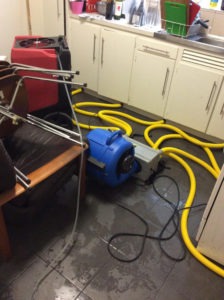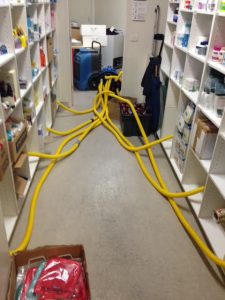Structural Drying Services Melbourne
Natural weather disturbances cannot be prevented or avoided. These not just bring about countless misery to everyone but might also cause extensive damage to carpets and the structural foundations of the carpet. Natural calamities such as incessant rains, floods, and tropical storms can cause water damage to the carpet.
Water damages result in a build-up of moisture in a place resulting in the damage to expensive carpets. There might also be other concerns about foul odour and mould development. Microbial bodies find it easier to breed and attack damp carpets.

A structural drying procedure is the solitary means to ensure that the water damage to your carpet is treated. The process usually takes up a long time to dry the different areas of the carpet with regular evaluation and monitoring of the development make the structural drying process efficient.
This is the fastest and best way to dry a structure by utilizing non-destructive procedures. This procedure is also effective in removing moisture from the carpet. First and foremost, water is eliminated from the carpet and the same structures using Hydro –X, an extractor unit that eliminates water without removing the carpet. Turbo drying tools are used with the proper configuration to ensure good airflow to remove the moisture from the structures, particularly from the flooring.
Some of the advantages provided by a structure drying procedure are:
 Fast time drying: normally 3 days or less than
Fast time drying: normally 3 days or less than- The affected part can return to the whole structure
- Claims get addressed fast as less reconstruction or rebuilding is not required
- Claim cost is low as the process of drying is non-destructive
If you need experts and professionals in structural drying in Melbourne, feel free to contact us. We have been in the business for many years. Ensure that you employ skilled and knowledgeable workers who thoroughly carry out the structure drying procedure. This will ensure that each trace of moisture from your carpet will be removed. This is undoubtedly one of the best investments you can make if you want to make sure that your carpet is safe from water damage.
FAQs
What is structural drying?
Structural drying removes excess water and moisture from materials that make up a structure. It is crucial in the restoration process after a property has been damaged by water, whether due to a burst pipe or a significant storm.
When water leaks into a home or business, it can cause significant damage to many materials. Drywall, wood, metal and concrete are especially vulnerable to water damage, as they will absorb large quantities of water and become warped and weak. If left untreated for any period, this water damage can lead to mould growth or even complete structural collapse.
Structural drying is most effective when performed shortly after the initial damage occurs. The sooner professionals begin work on eliminating excess moisture from a building’s materials, the less likely it is that the affected area will develop mould growth or require extensive repairs.
The first step in structural drying is removing all excess surface water using pumps and other specialized equipment. Next, industry-grade air movers increase airflow around the damaged materials, forcing trapped moisture out of them.
Dehumidifiers remove excess moisture from the air, while fans are used to disperse hot, dry air throughout the dry area. This process may be repeated several times by professionals until it is dry enough to meet a certain standard of dryness and safety.
What Happens During Structural Drying?
Like Wet Carpet Cleaners, a professional restoration company will begin by extracting any standing water from your property using industrial-grade pumps and vacuums. They will then use special tools like hygrometers, infrared cameras, and moisture meters to detect how much moisture your property has retained after the initial extraction of standing water. These devices can help a professional determine what materials need to be dried out and how long the structural drying will take.
What is structural dehumidification?
Structural dehumidification is the process of removing moisture from an indoor environment. The process can be done through various means, including mechanical dehumidification, air movement, and absorption methods.
The most common method of structural dehumidification is to use a dehumidifier that passes air over refrigerated coils, which cools the air, causing condensation to form on the coils. The water on the coils is then drained into a collection container. This method effectively removes up to 10 gallons of water per day from an indoor environment.
Structural dehumidification is crucial when your property sustains water damage from storms, floods, and other natural disasters or plumbing failures. Without proper structural dehumidification and drying, a building will remain damp for long periods, promoting mould growth and other micro-organisms that can cause significant health and safety issues for building occupants.



